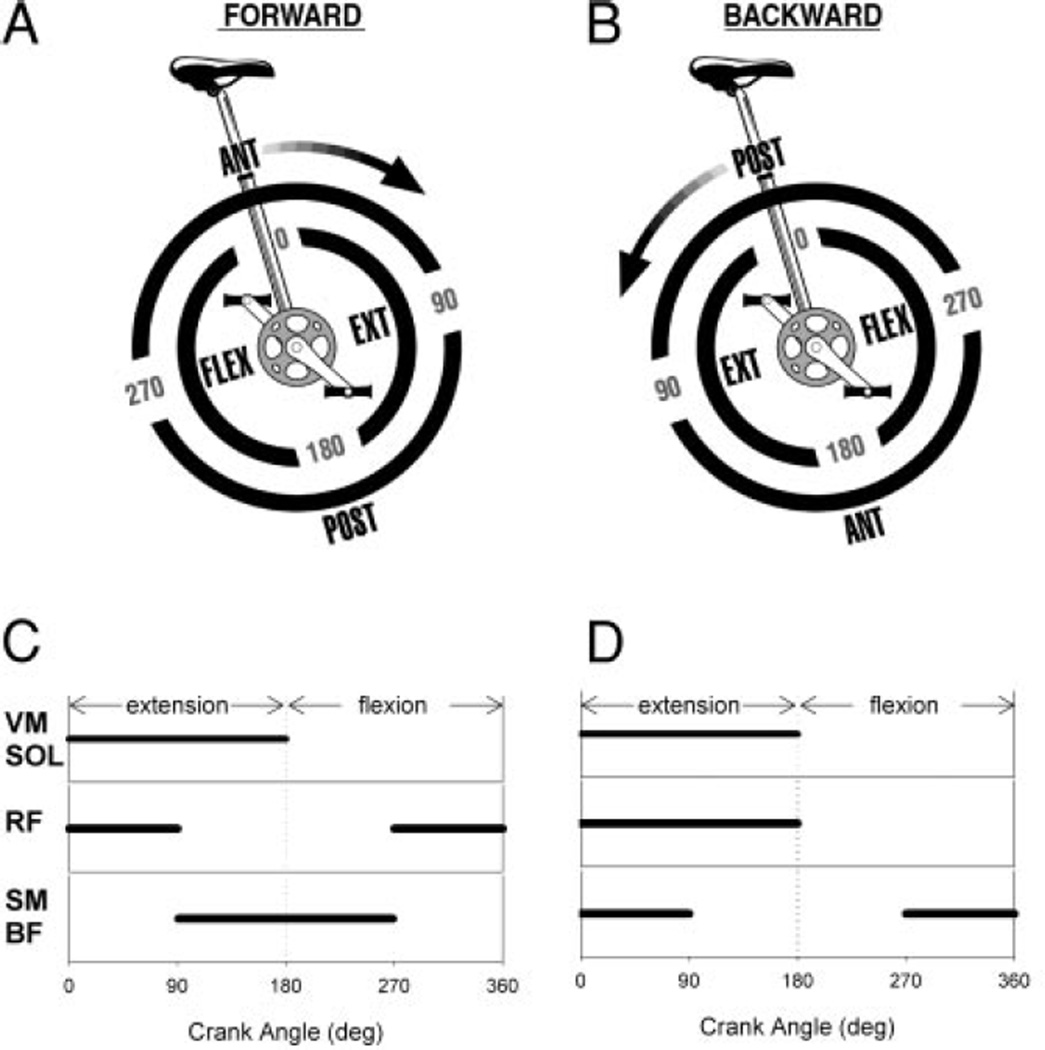FIG. 1.
A and B: the biomechanical components of pedaling as described by Raasch and Zajac (1999). In forward and backward pedaling, the limbs flex and extend in alternation. At the transitions between flexion and extension, the limb must move anteriorly or posteriorly with respect to the pelvis to maintain smooth crank progression. In backward pedaling, the location of the anterior and posterior transitions shifts 180°. Forward dynamics simulation predicts that uniarticular extensor muscles [vastus medialis (VM) and soleus (SOL)] will be active during limb extension and biarticular muscles [rectus femoris (RF) and hamstring (HAMS)] will be active during phase transitions (Raasch and Zajac 1999). C and D: idealized muscle phasing in forward and backward pedaling as described by Ting et al. (1999) for neurologically intact adults. VM and SOL are active during limb extension and do not change their phasing in backward pedaling. RF and HAMS are active during the anterior and posterior limb transitions, respectively, and shift their phasing in backward pedaling. The RF does not shift as much as the model predicts. POST, posterior; ANT, anterior; EXT, extension; FLEX, flexion; BF, biceps femoris.

